As I sit watching rain pour over the front eave in long silver strings . . . I think about water. By 2025 two-thirds of the world’s population may face water shortages. Ecosystems around the world will suffer even more. Over half the world’s wetlands have disappeared. Climate change is altering patterns of weather and water around the world, causing shortages and droughts in some areas and floods in others. Since we depend on water for our food, there’s little question we must become smarter about conserving water. Science is turning to an obscure lineage of death-defying plants that can live without water for years. These plants go back a long way, well before the time of the dinosaurs.
When oceans began to recede on our planet, the first land-based plants suffered stresses their aquatic ancestors never knew. To stay hydrated they developed two ways of coping. One group developed vascular systems to transport and retain water. The other group adapted a simpler, nonvascular process. All these eons later, the vascular plants have (with some exceptions) largely lost their ability to tolerate dehydration. But some descendants of the nonvascular group, relying on ancient and primitive processes, show incredible resilience in the face of deadly droughts. To speak plainly, we’re talking mostly about mosses, liverworts, hornworts, algae, lichens and ferns. Come along and let’s take a look at three such amazing Texas organisms.
There’s no doubt life comes with death locked in every cell, yet we’ll first meet a spike moss, Selaginella lepidophylla (native to the Chihuahuan Desert), that appears to defy this ultimate reality. It looks like a cross (evolution-wise) between a moss and a fern. Either attached to the earth by the most delicate of tethers or rolling free like a tumbleweed, in its desiccated form it appears brown, shriveled and very dead. Being neither a true moss nor a fern, this Frankenstein plant takes the vision of re-birth to a new level.
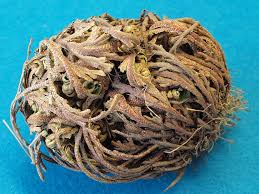
Introduce a little water and it becomes new-born in the most amazing way, springing to life, gently unfolding, and turning emerald green. Great myths and legends through the ages have spoken of rising from the dead. But this happens before your very eyes! Is it, then, any wonder this miracle mesmerizes the weak and gullible among us?
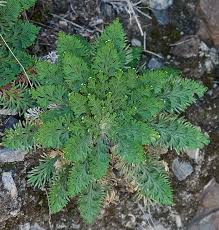
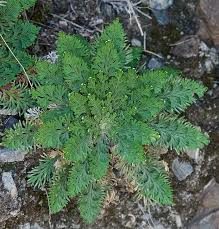
It goes by many names: false rose of Jericho, dinosaur plant, flower of stone, resurrection moss—to name a few. Put any of these common names into an Internet search and you’ll find preposterous ads about reincarnation after a century of death, a wonder antidote against negative energy, a living symbol of protection, peace, power, abundance—it’s enough to cause believers to shriek their undying dedication to the Creator and collapse in a quivering heap! Why, who wouldn’t want to have one?
To me, the more interesting question about S. lepidophylla is, what’s going on here? Although it can’t live for 100 years without water (as some ads claim), it can lose up to 95% of its moisture content and survive for several years without suffering damage. Here’s how. As drought progresses and the plant enters a dormant state, at some point it makes an incredible chemical transformation. Photosynthesis gives way to the production of a crystalized sugar (trehalose), which acts in place of the evaporating water to hold salts in solution within plant tissues. This restores sustenance and growth while preventing death from excess salinity.

Where drought persists, the roots may even detach and the plant is free to roam about the country, carried along by the scorching West Texas wind. If lucky enough to encounter moisture somewhere else, S. lepidophylla may rehydrate, take root—and get a new lease on life. Once water is restored to the plant tissues, sugar crystals dissolve and the plant’s paralyzed metabolism cranks back up. Photosynthesis kicks in and seemingly dead, desiccated fronds turn green and unfurl again. This ability to alter water content in accordance with changes to moisture in the surrounding environment goes by the tongue-twister “poikilohydric” (POI-kee-lo-hy-drik).
Truth: nothing lives forever. If dehydration is too rapid or drought and wet conditions too irregular, the ability to dry up and rehydrate may diminish. After dozens of cycles, the resurrection plant can—and ultimately does—die.
This bizarre behavior is nothing short of primordial. According to some authorities, the genus Selaginella dates to the Carboniferous Period, the ancient time when the great coal beds of the world were laid down. If so, this would make it the oldest genus of higher plants still around today! The plant is native to Texas, Arizona, and Mexico. It doesn’t produce seeds or flowers; it reproduces through spores, but these spores aren’t your everyday garden-variety. Turns out, they are highly flammable. They produce quick-burning fire when ground up into a fine powder, making them useful for fiery magic shows and theatrical productions. Poof!
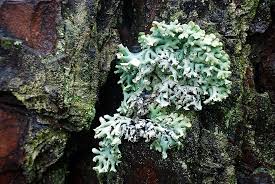
I was introduced to our second water miser by Nicholas Cowey during hike leader training at McKinney Roughs. Nick pulled off the trail, squatted and presented for inspection what appeared to be a small lichen-covered rock. Showing us clearly that the lichen had the typical gray-blue crust over filaments of a tight-woven moss-like mass, he then dribbled bottled water over it. Viola! There, before our incredulous eyes, the rock transformed and came to life as a green, living entity.

Nick went on to explain the lichen was actually a slow-growing association between fungi and a unicellular green algae. As a poikilohydric organism, it too survives alternating periods of dryness (low metabolic activity) and hydration (normal metabolism). After exposure to water, the cortex of the structure becomes more transparent, stimulating the algae to conduct photosynthesis. In less than a minute, it turns as green as a seasick frog on a pool table.
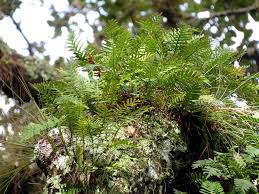
Our third Texas specimen goes by the common name “resurrection fern.” If you’ve ever gazed up at a centuries-old Southern live oak or bald-cypress tree and seen delicate green fronds curling around the tree’s trunk and branches, you’ve likely caught a glimpse of Pleopeltis polypodioides. People sometimes confuse it with Spanish moss (which often lives in the same trees), but they’re not the same plant.
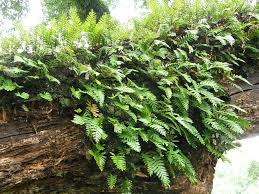
Like other poikilohydric plants, the resurrection fern can lose almost all of its free water and remain alive until humidity improves. P. polypodioides attaches itself to the limbs of its host tree with slender rhizomes or it can carpet the surfaces of rocks and dead logs. It also develops from spores that float in the air and deposit themselves on a moist surface, but in addition, it can also reproduce by the division of its rhizomes. After attachment, it gets nutrients from the air as well as those that collect on the outer surfaces of bark or rock; it’s not a parasite—it doesn’t harm the host tree. If you’re familiar with how ball moss coexists and survives on area oak trees, this is the same process. With a much wider distribution, this coarse-textured creeping fern is found in South America, Mexico, the Caribbean, Africa and the Southern United States (including Texas).
So there you have it. We have three native Texas water-wise plants, but the term resurrection plant applies to a diverse range of about 130 plant species across the globe—almost always in arid areas of the world. In Asia we find another species of spike moss (Selaginella tamariscina) with the same properties. Plants of the genus Anastatica (from the Greek, ‘resurrection’) grow in arid regions of the Middle East and the Sahara Desert, geographically spanning North Africa, Iran, Egypt, Palestine, Israel, Syria, Jordan and Pakistan. And down under, the pincushion lily (Borya nitida) is native to Western Australia.
How, exactly, do these plants relate to solving our water problem? Agriculture consumes more water than any other use and wastes much of that through inefficiencies. Global climate change, increasingly unpredictable weather and a growing worldwide population all mean our current system of agricultural production may not survive what’s coming. Forecasts suggest that only the most resilient species will continue to yield in future climatic conditions. Researchers are studying various resurrection species, looking for genes to use in developing stress-resistant or desiccation-tolerant crops. One promising species is an Australian grass (Tripogon loliiformis) genetically related to cereals, rice, sorghum and maize. More promising, perhaps, is the fact that the genus Tripogon is nearly global in its range, giving hope to a larger number of ecosystems.
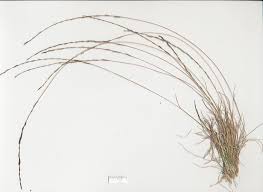
Clearly, there are multiple threats to our continued existence on this planet, but there’s nothing more essential to life than water. Vast, global migration patterns are driven by the movements and availability of water. Rain forests, grasslands, and savannas, where much life is nourished, depend on plentiful water. Man has used this resource to grow his food since Egyptians first harnessed the Euphrates and Tigris Rivers some 12,000 years ago. The secrets of life are not obscured; they are all around us. By looking closely at nature, hopefully we can find a way forward.
By Larry Gfeller


